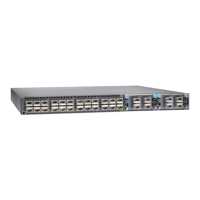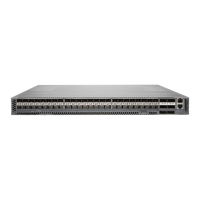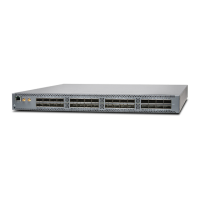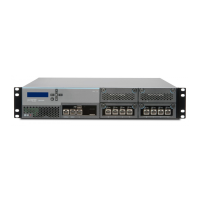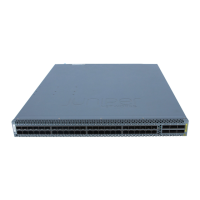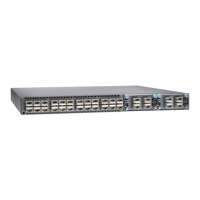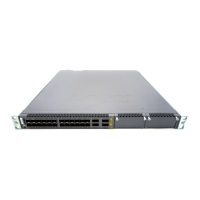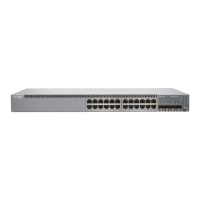•
A dust cover to cover the port
Figure 57 on page 137 shows how to remove a QSFP+ transceiver. The procedure is the
same for all types of transceivers except the CFP transceivers.
To remove a transceiver from a device:
1. Place the antistatic bag or antistatic mat on a flat, stable surface.
2. Label the cable connected to the transceiver so that you can reconnect it correctly.
WARNING: Do not look directly into a fiber-optic transceiver or into the
ends of fiber-optic cables. Fiber-optic transceivers and fiber-optic cables
connected to transceivers emit laser light that can damage your eyes.
WARNING: Do not leave a fiber-optic transceiver uncovered except when
inserting or removing a cable. The rubber safety cap keeps the port clean
and prevents accidental exposure to laser light.
CAUTION: Do not bend fiber-optic cables beyond their minimum bend
radius.An arcsmallerthan a few inches in diametercan damagethe cables
and cause problems that are difficult to diagnose.
3. Remove the cable connected to the transceiver (see “Disconnecting a Fiber-Optic
Cable froma Device” on page 139). Cover the transceiver and the end of each fiber-optic
cable connector with a rubber safety cap immediately after disconnecting the
fiber-optic cables.
Copyright © 2017, Juniper Networks, Inc.136
QFX3500 Device Hardware Documentation
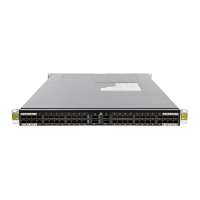
